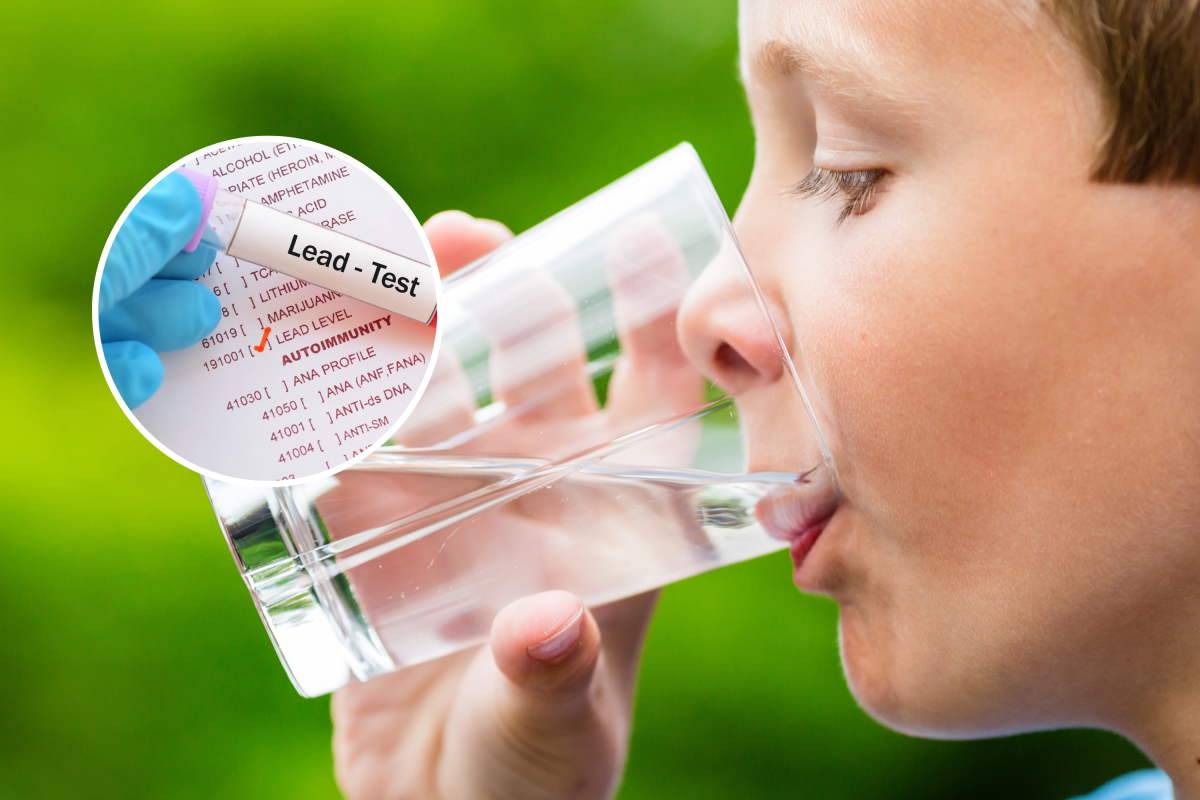There is "widespread" lead exposure through drinking water in Chicago, Illinois, with 68 percent of young children affected, a study has found.
The chemical element can be found in many different areas of the environment, including the air, the soil, and the water. Most of our exposure comes from fossil fuels and other human activities.
Researchers at Johns Hopkins Bloomberg School of Public Health, Baltimore, and Stanford University School of Medicine set out to study how much lead is contaminating the drinking water in Chicago to see how much it impacted children under the age of 6, and found that an estimated 68 percent of this age group—or about 129,000 children—were exposed to the chemical this way.
"These findings are concerning, but not nearly as bad as the situation in Flint was—groups in the city should help residents get better access to testing and filtration," corresponding author Benjamin Q. Huynh, at the Department of Environmental Health and Engineering, Johns Hopkins Bloomberg School of Public Health, told Newsweek.
Huynh refers to the Flint water crisis, which began on April 25, 2014, when Michigan changed municipal water supplies from Lake Huron to the Flint River. The change caused corrosion which meant lead and other chemical leaked into the drinking water.
According to the Centers for Disease Control and Prevention, at the time, 66 percent of all households reported one or more adult with abnormal health issues.
"Lead is a neurotoxin, with no safe level of exposure, especially for children and pregnant women. It can cause developmental disorders, impact learning/growth, and induce preterm births," Huynh said.
"What's next is to figure out the best ways to reduce lead exposure—there's currently a federal plan to remove all lead service lines, but Chicago's timeline for that is 40 years. In the meantime, how can we have better outreach for helping residents test their water for lead, and reducing exposure through filtration?"

"Nothing is more important than the health and safety of Chicago's residents and, particularly, our children. The Department of Public Health (CDPH) and Department of Water Management (DWM) will continue working together to identify and remediate all sources of lead from Chicago homes," a Chicago Water Management spokesperson told Newsweek, in response to the findings.
"In Chicago, exposure to lead-based paint dust remains the overwhelming source of elevated blood levels in children. This is why CDPH has invested in robust lead-based paint and dust inspection and mitigation, especially in communities most impacted. By promoting routine childhood lead testing, providing nurse follow up support, conducting home inspections and remediating lead paint, CDPH has made great progress in reducing elevated blood lead levels in children by remediating lead paint. There has been a dramatic decrease in the percentage of children who have blood lead levels of over 5ug/dL- from 70 percent in 1996 down to 1.6 percent in 2023. There is still work to be done to eliminate these lead hazards, particularly in Black and Brown communities where housing stock is older, which is why the City is expanding its lead and healthy homes program."
The statement noted that Chicago's water continues to "meet and exceed" all standards set by the U.S. Environmental Protection Agency. The Department of Water Management said it introduced corrosion control into drinking water "to mitigate lead and other contaminants from leaching into the drinking water." The department also notes that the city has introduced five programs to remove 400,000 lead service lines as well as offering free water testing.
"There is always more to be done, and we will continuously work towards a future where no child in Chicago is at risk of lead poisoning," the statement said.
Increased lead exposure in children can lead to limitations in cognitive development, as well as other severe health effects.
In adults, it can cause high blood pressure and issues in the brain and kidney. Lead poisoning can be identified with several symptoms including stomach cramps, headaches, muscle and joint pain, fatigue and constipation.
The study used a sample size of 1 ppb at the two-minute sample after six hours of stagnation to reach its findings. Chicago Water Management noted that this is an "extremely low threshold."
The department told Newsweek that the concentration of lead found in a two-minute sample "would only indicate whether or not there is a lead service line, not routine exposure."
The most recent census count found 151,000 children, 5 years and younger living in Chicago. A recent inventory from Chicago Water Management found that 86 percent of all drinking water service lines are lead or galvanized. According to the department, this means that 86 percent of all children, or 129,860, in the city would be served by a lead service line.
The study, published in the journal JAMA Pediatrics, also reported that white households "disproportionately drink tap water" while Black and Hispanic households "disproportionately drink bottled water," meaning the latter groups' exposure is unknown.
"These findings indicate that childhood lead exposure is widespread in Chicago, and racial inequities are present in both testing rates and exposure levels. Machine learning may assist in preliminary screening for lead exposure, and efforts to remediate the effects of environmental racism should involve improving outreach for and access," the authors wrote.
The study notes however that bottled water is "not necessarily less lead contaminated than tap water."
"Similarly, using filtered tap water does not necessarily prevent lead exposure, as many consumer-grade filters do not remove lead, and some households may not change their filters as consistently as is required," the authors wrote.
"The extent to which groups primarily using filtered tap water or bottled water are exposed to lead contaminated drinking water is therefore unknown. The racial and ethnic disparities present are indicative of the myriad ways environmental racism can manifest. Lower screening rates, lower consumption of tap water, and higher levels of lead exposure among predominantly Black and Hispanic blocks may indicate mistrust toward water sources or lack of community engagement from relevant authorities."
Lead gets into drinking water through lead pipes and faucets, as well as plumping fixtures, according to the Centers for Disease Control and Prevention. The actual pipes, that carry the drinking water to the home, can also contain lead.
Correction 03/18/2024, 2:17 p.m. ET: This article corrected the affiliation Johns Hopkins Bloomberg School of Public Health
Update 03/19/2024, 05:15 a.m. ET: This article was updated to include comment from Chicago Water Management.
Do you have a tip on a science story that Newsweek should be covering? Do you have a question about lead? Let us know via science@newsweek.com.
Uncommon Knowledge
Newsweek is committed to challenging conventional wisdom and finding connections in the search for common ground.
Newsweek is committed to challenging conventional wisdom and finding connections in the search for common ground.
About the writer
Robyn White is a Newsweek Nature Reporter based in London, UK. Her focus is reporting on wildlife, science and the ... Read more
To read how Newsweek uses AI as a newsroom tool, Click here.








